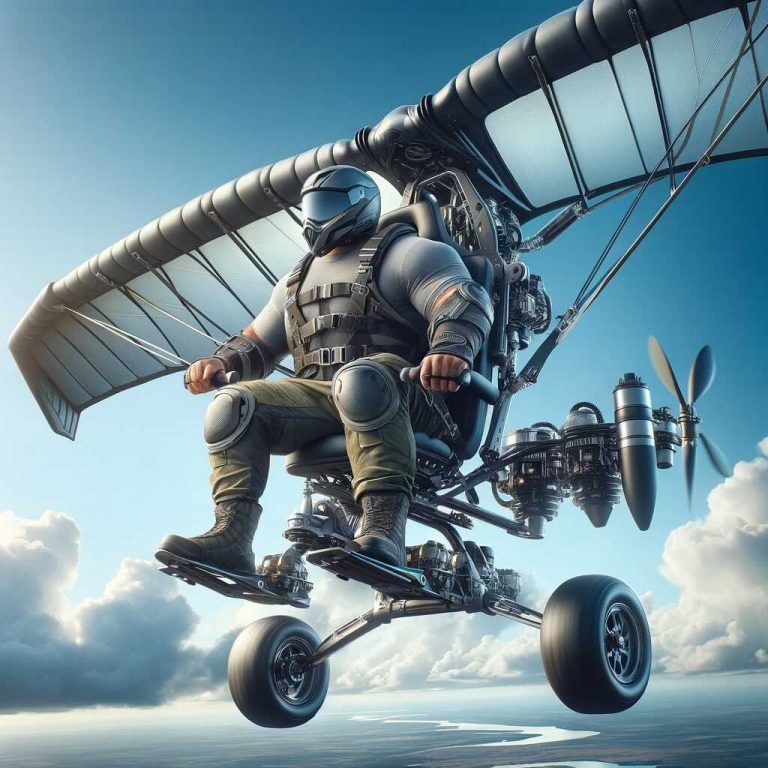Paramotoring has fans all over the world, but if you’re new to the sport, the big question on your mind is probably: How dangerous is it?
Paramotoring is generally a safe activity, but like any adventure sport, it comes with risks. While fatality rates are low—about 1 in 1,500 flights encountering serious issues—a small mistake can lead to significant problems. Since the sport is self-regulated, professional training is crucial before taking to the skies. Out of 446 reported paramotor accidents, only about 10% were classified as serious or harmful, highlighting that most incidents can be avoided with proper precautions and experience.
The short answer: Paramotoring is as safe as the pilot makes it. Risks exist, like riding a motorcycle or driving a car, but most can be mitigated with proper training, equipment, and judgment. Let’s explore the inherent risks of paramotoring, understand their causes, and learn how to mitigate them.
Understanding the Risks of Paramotoring
1. Accidents on the Ground
Surprisingly, many paramotor injuries occur before the pilot even takes off. Mishandling the engine on the ground is a common culprit.
What goes wrong?
Pilots may start the engine without strapping into the harness, causing the paramotor to flip if the throttle jams open. This can lead to injuries from the spinning propeller.
How to avoid it?
- Always start the engine while strapped into the harness.
- Perform a thorough pre-flight inspection, ensuring the throttle lever and cable operate smoothly.
- Call out “CLEAR PROP!” to alert others nearby.
2. Equipment Failures
Paramotors are mechanical devices; like any machinery, they’re prone to wear and tear.
Examples of failures
- Propeller damage from foreign objects or poor maintenance.
- Worn-out carabiners or harness straps breaking mid-flight.
How do we minimize risks?
- Inspect equipment before every flight, focusing on nuts, bolts, harnesses, and lines.
- Replace components like carabiners and riser magnets regularly, even if they appear functional.
3. Pilot Errors
A 2024 BMJ study reported that pilot error accounts for 53.5% of paramotoring accidents. Mistakes often occur due to overconfidence, lack of training, or poor judgment.
Common mistakes include
- Flying too low and hitting obstacles.
- Attempting advanced maneuvers like spirals or wingovers without proper training.
- Misjudging weather conditions.
Pro tips
- Learn to respect the sport. Take professional training and practice new skills at safe altitudes.
- Always maintain sufficient altitude for emergency recovery.
4. Weather Conditions
Paramotor wings are incredibly sensitive to weather. Gusty winds, turbulence, or thermals can cause sudden collapses, especially for inexperienced pilots.
Weather mishaps
- Flying in solid winds or midday thermals can destabilize the wing.
- Rotor zones (downwind of tall objects) create swirling air currents that collapse wings.
Play it safe
- Fly in calm weather, usually early morning or late evening.
- Check wind speeds and forecasts before heading out.
5. Low Altitude Flying
Flying low may look cool, but it’s a recipe for disaster. Obstacles like power lines, trees, or water can become deadly hazards.
The golden rule
Stay high unless landing. A collapsed wing at 1,000 feet offers time to deploy a reserve parachute; at 50 feet, it doesn’t.
6. Water Risks
Flying over water without flotation devices is a significant risk. Even experienced pilots can drown if they become tangled in their gear after landing in water.
Solution
Equip yourself with a flotation device when flying near or over water.
Are There Statistics on Paramotor Safety?
Unlike regulated aircraft, paramotors fall under FAA Part 103 in the U.S., which means no mandatory incident reporting. However, several studies and community insights provide valuable information:
Fatality rates
According to Outdoor Troop, paramotoring has a fatality rate of 1 in 1,504 pilots annually, better than paragliding (1 in 752) and motorcycles (1 in 1,382).
Common causes of incidents
- Pilot errors: 53.5%
- Mechanical failures: 17.5%
- Weather conditions: 5.7%
While these numbers suggest that paramotoring can be relatively safe, underreporting is common—only about 10% of incidents are officially documented.
Mitigating Risks: How to Fly Safely
1. Prioritize Professional Training
Proper training is the cornerstone of safe paramotoring. A certified instructor will teach you:
- How to handle emergencies.
- Wing control techniques.
- Safe launching and landing practices.
2. Use High-Quality Equipment
Investing in reliable, PPG-rated equipment can be a lifesaver. Avoid second-hand paramotors unless inspected by a professional.
3. Pre-Flight Checks
Adopt a meticulous pre-flight routine
- Inspect harness stitching and carabiners.
- Check for loose bolts, frayed lines, or tears in the wing.
4. Respect Weather Conditions
Avoid flying:
- In gusty or strong winds.
- During midday thermals in summer.
- Near rotor zones (downwind of obstacles).
5. Always Carry a Reserve Parachute
A reserve parachute gives you a second chance in emergencies. Steerable reserves allow you to land away from hazards.
6. Stay Focused
Inattention is a killer. Avoid distractions like fiddling with cameras or instruments during flight.
7. Learn from Others
Paramotoring is a small but tight-knit community. Study accident reports, read books, and watch instructional videos to learn from others’ mistakes.
Debunking Common Misconceptions
- “Paramotors are inherently dangerous.”
- Not true. When flown correctly, paramotors are remarkably safe. Most accidents stem from human error.
- “It’s safer than driving.”
- Statistically, flying is riskier than driving, but this varies depending on the pilot’s skill and adherence to safety practices.
- “Equipment failure causes most accidents.”
- Mechanical issues are relatively rare. With regular maintenance and inspections, they’re largely preventable.
Real-Life Stories: Lessons from the Sky
- The Curious Case of the Brake Toggle: A pilot in Australia suffered a fatal accident when a loose brake toggle was sucked into the propeller, causing a spiral dive. Lesson? Always secure toggles on magnets when not in use.
- A Lucky Escape: A new pilot ignored weather warnings and launched in gusty conditions. A sudden collapse sent him crashing into a field, but his reserve parachute saved his life. Lesson? Trust the forecast.
Is Paramotoring Worth the Risk?
Yes, paramotoring has risks, but they’re manageable with proper training, preparation, and respect for the sport. For most enthusiasts, the joy of flying outweighs the dangers.
If you’re considering taking up paramotoring, ask yourself:
- Are you willing to invest in professional training?
- Do you have the discipline to follow safety protocols?
- Can you accept the inherent risks of aviation?
If you answered yes, welcome to the skies! Fly high, stay safe, and respect the freedom of flight.
In conclusion, paramotoring has risks, primarily due to pilot error, equipment failure, and weather conditions. However, with proper training, reliable gear, and respect for safety guidelines, paramotoring can be a safe and exhilarating activity.








